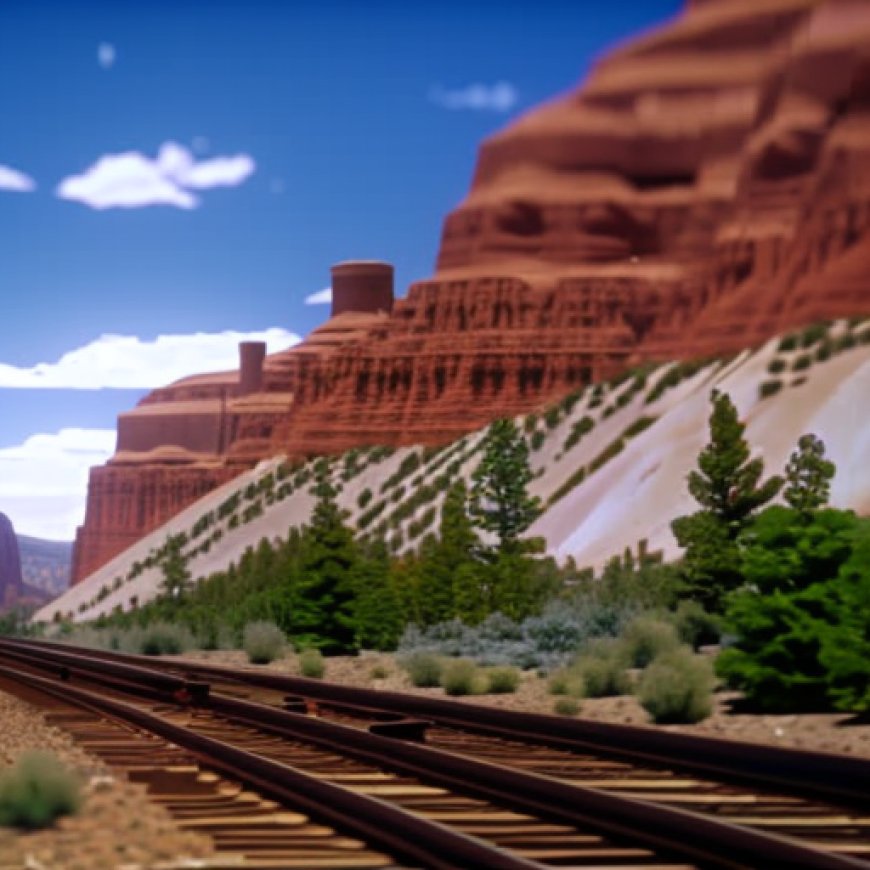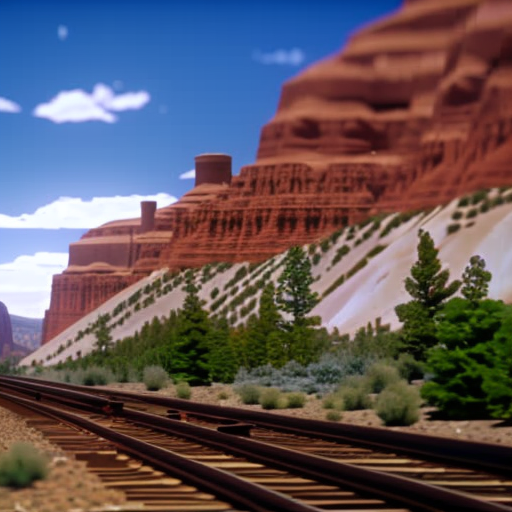Appeals Court Throws Out Permit for Utah’s Uinta Basin Railway
Appeals Court Throws Out Permit for Utah's Uinta Basin Railway Center for Biological Diversity


Federal Appeals Court Rejects Permit for Uinta Basin Railway

WASHINGTON— A federal appeals court today rejected the U.S. Surface Transportation Board’s permit for the proposed Uinta Basin Railway, designed to quadruple oil production in Utah’s Uinta Basin and move crude through the Colorado Rockies to Gulf Coast refineries.
Violation of National Environmental Policy Act
Today’s ruling by the U.S. Court of Appeals for the D.C. Circuit said the board violated the National Environmental Policy Act by failing to fully analyze the railway’s potential harm to the climate, wildlife, the Colorado River and people, including environmental justice communities along the Gulf Coast. The decision strips the railway of the permitting required for its construction.
Impact on Climate, Wildlife, and Communities
“This is an enormous victory for our shared climate, the Colorado River and the communities that rely on it for clean water, abundant fish and recreation,” said Deeda Seed, a senior campaigner at the Center for Biological Diversity. “The Uinta Basin Railway is a dangerous, polluting boondoggle that threatens people, wildlife and our hope for a livable planet. The Biden administration needs to dismantle this climate bomb and throw it in the trashcan where it belongs.”
Increase in Oil Production and Environmental Risks
The proposed 88-mile-long railway would spur increased oil production — estimated at an additional 350,000 barrels a day — by linking Uinta Basin oil fields to national rail networks. Most of the crude would travel through the Colorado Rockies for more than 100 miles and then on to Gulf Coast refineries, increasing the risk of fires and oil spills along the vulnerable Colorado River corridor.
Ensuring a Sustainable Climate Future
“This ruling is a win for communities across the West and is critical for ensuring a sustainable climate future,” said Carly Ferro, executive director of the Utah Sierra Club. “From its onset, this project’s process has been reckless and egregious. But today, the people and the planet prevailed. We will continue to advocate for accountable processes to ensure a healthy environment where communities can live safely, and this win will help make that possible.”
Failure to Consider Environmental Impacts
The appeals court found that the Surface Transportation Board failed to consider harm to the environment and downstream communities, the risk of wildfires and derailments along the drought-stricken route, and the project’s “uncertain financial viability.”
“The deficiencies here are significant,” the ruling said, including failure to “quantify reasonably foreseeable upstream and downstream impacts on vegetation and special-status species of increased drilling in the Uinta Basin and increased oil-train traffic along the Union Pacific Line, as well as the effects of oil refining on environmental justice communities the Gulf Coast.” The court also said that the agency failed to “take a hard look at wildfire risk as well as impacts on water resources downline; and explain the lack of available information on local accident risk.”
Victory for Climate, Public Health, and Wildlife
“The court’s rejection of this oil railway and its ensuing environmental damage is a victory for the climate, public health and wild landscapes,” said Samantha Ruscavage-Barz, legal director for WildEarth Guardians. “The public shouldn’t have to shoulder the costs of the railway’s environmental degradation while the fossil fuel industry reaps unprecedented profits from dirty energy.”
Environmental Damage and Threats to Wildlife Habitat
In addition to climate damage, the railway would harm public lands, rare plants and wildlife habitat. According to a now vacated federal environmental analysis, the railway would dig up more than 400 Utah streams and strip bare 10,000 acres of wildlife habitat, including crucial areas that pronghorn and mule deer need to survive. In Emma Park, a remote sagebrush valley known to birdwatchers, bulldozers and train traffic could drive imperiled greater sage grouse out of their mating and nesting grounds.
A Brighter Day for Climate Justice
“When Congress approved the Energy Policy Act of 2005, which became the incentive to exploit the unconventional fuels of the Colorado River Basin, our hope was that this very bad energy policy might incite a popular movement to address and counter the impacts of global warming,” said John Weisheit, conservation director for Living Rivers in Moab, Utah. “Yes, we need to thank the judges for making the right decision today, but this brighter day belongs to the climate justice movement.”
Win for Public Health and the Environment
“This decision is a win for public health and the environment,” said Jonny Vasic, executive director for Utah Physicians for a Healthy Environment. “The court ruled the Surface Transportation Board conducted an environmental review that failed to meet the requirements of the law. The people of Utah can breathe a sigh of relief. Hopefully this is the beginning of the end for the Uinta Basin Railway.”
SDGs, Targets, and Indicators Analysis
1. Which SDGs are addressed or connected to the issues highlighted in the article?
- SDG 13: Climate Action
- SDG 14: Life Below Water
- SDG 15: Life on Land
The article discusses the potential harm to the climate, wildlife, and water resources caused by the proposed Uinta Basin Railway. These issues are directly connected to SDG 13 (Climate Action), SDG 14 (Life Below Water), and SDG 15 (Life on Land), which aim to address climate change, protect marine ecosystems, and preserve terrestrial ecosystems and biodiversity.
2. What specific targets under those SDGs can be identified based on the article’s content?
- SDG 13.2: Integrate climate change measures into national policies, strategies, and planning.
- SDG 14.1: By 2025, prevent and significantly reduce marine pollution of all kinds.
- SDG 15.1: By 2020, ensure the conservation, restoration, and sustainable use of terrestrial and inland freshwater ecosystems and their services.
Based on the article’s content, the specific targets that can be identified are SDG 13.2, which focuses on integrating climate change measures into policies and planning, SDG 14.1, which aims to reduce marine pollution, and SDG 15.1, which aims to ensure the conservation and sustainable use of terrestrial ecosystems and freshwater ecosystems.
3. Are there any indicators mentioned or implied in the article that can be used to measure progress towards the identified targets?
- Indicator for SDG 13.2: Existence of national policies or strategies that integrate climate change measures.
- Indicator for SDG 14.1: Level of marine pollution, specifically related to oil spills and contamination.
- Indicator for SDG 15.1: Extent of protected areas and conservation efforts in terrestrial and freshwater ecosystems.
The article mentions the need to fully analyze the railway’s potential harm to the climate, wildlife, and water resources. These can be used as indicators to measure progress towards the identified targets. Specifically, the existence of national policies or strategies that integrate climate change measures can be used as an indicator for SDG 13.2. The level of marine pollution, particularly related to oil spills and contamination, can be used as an indicator for SDG 14.1. The extent of protected areas and conservation efforts in terrestrial and freshwater ecosystems can be used as an indicator for SDG 15.1.
4. Table: SDGs, Targets, and Indicators
| SDGs | Targets | Indicators |
|---|---|---|
| SDG 13: Climate Action | 13.2: Integrate climate change measures into national policies, strategies, and planning. | Existence of national policies or strategies that integrate climate change measures. |
| SDG 14: Life Below Water | 14.1: By 2025, prevent and significantly reduce marine pollution of all kinds. | Level of marine pollution, specifically related to oil spills and contamination. |
| SDG 15: Life on Land | 15.1: By 2020, ensure the conservation, restoration, and sustainable use of terrestrial and inland freshwater ecosystems and their services. | Extent of protected areas and conservation efforts in terrestrial and freshwater ecosystems. |
Behold! This splendid article springs forth from the wellspring of knowledge, shaped by a wondrous proprietary AI technology that delved into a vast ocean of data, illuminating the path towards the Sustainable Development Goals. Remember that all rights are reserved by SDG Investors LLC, empowering us to champion progress together.
Source: biologicaldiversity.org

Join us, as fellow seekers of change, on a transformative journey at https://sdgtalks.ai/welcome, where you can become a member and actively contribute to shaping a brighter future.







